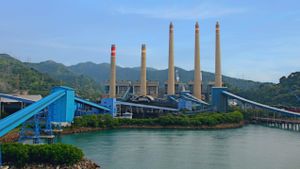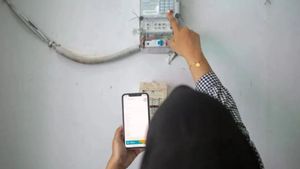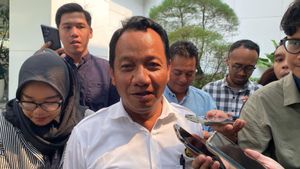JAKARTA - Minister of Finance (Menkeu) Sri Mulyani Indrawati said the central government would provide incentives in the form of funds for local governments (Pemda) that could control inflation. The value is Rp. 10 billion
"We will see the possibility of providing around Rp. 10 billion for each region that can reduce (inflation), the lowest top 10, the top 10 in provinces, regencies, and cities," said Minister of Finance Sri Mulyani in the presidential palace, quoted by Antara, Tuesday, September 13.
On Monday, September 12, President Jokowi ordered regional heads to use the Regional Revenue and Expenditure Budget (APBD) to contain the inflation rate due to the adjustment of fuel oil prices (BBM). The trick is to use 2 percent of the General Transfer Fund (DTU), which means that the General Allocation Fund (DAU) and Revenue Sharing Funds (DBH) are for dealing with the impact of inflation due to the increase in fuel prices.
"We use the Regional Incentive Fund (DID), where we use incentives for regions that can handle inflation. Later we will use BPS data and the ability to stabilize prices. From all regions BPS spends inflation every month in their respective regions. Later we will provide incentives that can control and for local governments whose inflation is lower than the national level," said Sri Mulyani.
The Ministry of Finance (Kemenkeu) itself has issued Minister of Finance Regulation Number 134/PMK.07/2022 concerning Mandatory Expenditures in the Context of Handling the Impact of Inflation in 2022, which requires local governments to distribute 2 percent of the General Transfer Fund (DTU) for social assistance.
The social assistance is directed at motorcycle taxis, Micro, Small and Medium Enterprises (MSMEs) and fishermen and for job creation and the provision of subsidies for the public transportation sector in the regions.
"As yesterday, the President conveyed about the issue of controlling inflation, especially in areas where the role of governors, mayors, regents is very important. Early detection of possible price movements, especially food, transportation and others, and using APBN and APBD instruments," added Sri Mulyani.
To reduce the potential for rising inflation, he continued, DAU and DBH can use 2 percent, for example to help with transportation costs to reduce the increase in fuel prices or intervention from the supply of goods themselves.
"That's why we will continue to monitor it, seen in the weeks ahead, the regional government is alert to use the APBD, yesterday the President and the Minister of Home Affairs said regarding the use of unexpected funds. There are still Rp9.5 trillion, if the DTU, DAU, and DBH are around Rp2.7 trillion," said Sri Mulyani.
The Minister of Finance hopes that all local governments can use the APBD quickly, precisely and accountably to be able to overcome the potential price increases in the regions.
"It can even be used for social assistance. So all of this is the goal that yesterday's decision can have an impact and the negative impact can be minimized through steps at the regional government," added Sri Mulyani.
President Jokowi at the "Inflation Control with All Regional Heads" meeting Monday (12/9) also explained Ten regencies/cities with the highest inflation rate, namely Luwuk (7.8 percent), Jambi (7.8 percent), Kotabaru (7.5 percent), Sampit (7.5 percent), Tanjung Selor (7.4 percent), Jayapura (7.4 percent), Sintang (7.4 percent), Bungo (7.2 percent), Padang (7.1 percent) and Sibolga (6.9 percent)). percent).
The provinces with the highest inflation are Jambi (7.7 percent), West Sumatra (7.1 percent), Central Kalimantan (6.9 percent), Maluku (6.7 percent), Papua (6.5 percent), Bali (6.4 percent), Central Sulawesi (6.2 percent), West Nusa Tenggara (5.9 percent), Riau (5.9 percent), South Kalimantan (5.8 percent).
Then there are Lampung (5.7 percent), Bengkulu (5.6 percent), DI Yogyakarta (5.5 percent), North Kalimantan (5.5 percent), South Sumatra (5.4 percent), North Sumatra (5.4 percent), East Java (5.2 percent), Central Java (5 percent), South Sulawesi (5 percent), East Kalimantan (5 percent). ).
The English, Chinese, Japanese, Arabic, and French versions are automatically generated by the AI. So there may still be inaccuracies in translating, please always see Indonesian as our main language. (system supported by DigitalSiber.id)













